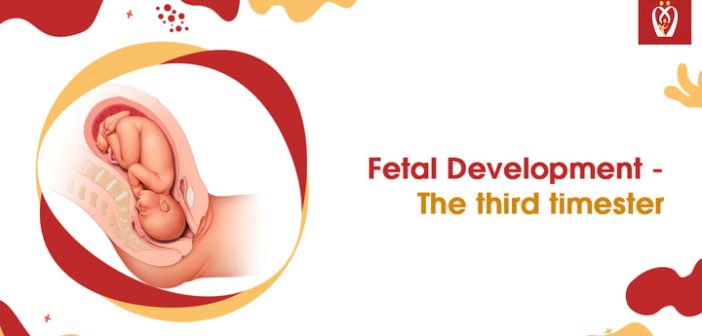Your pregnancy is nearing its conclusion! You can’t wait to see your kid for the first time. Read further to find out about your Fetal Development. Your uterus, on the other hand, continues to be a whirlwind.
Foetal development: Week 28
Eyelids and eyelashes of the baby begin to grow about week 28 of your pregnancy (or 26 weeks after conception). Rhythmic breathing and temperature regulation are both possible with the help of the central nervous system.
From crown to rump, your baby might be approximately 10 inches (250 millimetres) long and weigh nearly 2 1/4 pounds by this point.
Foetal development: Week 29
Your baby may kick, stretch, and grip at this point in your pregnancy, or 27 weeks after conception.
Foetal development: Week 30
Your baby’s eyes may open wide at 30 weeks of pregnancy, or 28 weeks following conception. This week, your baby may have a full head of hair. Your baby’s bone marrow is busy making red blood cells.
From crown to rump, your baby may have grown to more than 10 1/2 inches in length and weigh over 3 pounds by now.
Foetal development: Week 31
After 29 weeks of conception, or 31 weeks of pregnancy, your baby has completed most of its important growth. Now it’s time to put on some pounds fast.
Foetal development: Week 32
At 30 weeks after conception or 32 weeks of pregnancy, your baby’s toenails are visible.
This week, lanugo, the downy hair that has coated your baby’s skin for the previous few months, begins to come off.
From crown to rump, your baby may measure 11 inches long and weigh 3 3/4 pounds at this point in the pregnancy.
Foetal development: Week 33
Light stimulation may affect the pupils of the child to dilate or constrict during 33 weeks of pregnancy or 31 weeks postconception. His or her skeleton is becoming more rigid. The skull, on the other hand, is still pliable and malleable.
Foetal development: Week 34
Your baby’s fingernails have reached his or her fingers toward the end of the third trimester, or 32 weeks after conception.
Your infant may be over 4 1/2 pounds and over 12 inches long from crown to rump at this point.
Foetal development: Week 35
As your pregnancy progresses, the skin of your unborn child will begin to smooth out at about week 35 or 33 after conception. They might have chubby arms and legs.
Foetal development: Week 36
By 36 weeks of pregnancy, or 34 weeks after conception, the crowded conditions inside your uterus might make it hard for your baby to kick you. Still, you’re likely to feel lots of stretches, rolls, and wiggles.
Foetal development: Week 37
Your baby’s grip is solid at 37 weeks of pregnancy, or 35 weeks following conception.
Your baby’s head may begin to fall into your pelvis as you prepare for childbirth. If your kid’s head isn’t down, your GP will go through options with you if this is the case.
Foetal development: Week 38
36 weeks after conception, the circumferences of your baby’s head and abdomen are about the same size.
These toenails have reached the ends of your baby’s feet. Almost all of your baby’s lanugo has fallen out of his or her body.
By this point, your kid should be roughly 6 1/2 pounds in weight.
Foetal development: Week 39
Your baby’s chest is starting to become more prominent during 39 weeks of pregnancy, or 37 weeks following conception. To keep your kid warm after delivery, fat is being deposited all over his or her body.
Foetal development: Week 40
Your baby maybe 14 inches long and weigh 7 1/2 pounds when you’re 40 weeks pregnant. It’s important to remember, though, that healthy newborns are not all the same size!
If your due date comes and goes and you don’t see any indications of labour, don’t worry. Your due date is only a rough estimate of when you’ll be 40 weeks pregnant. It can’t tell you when your kid will be born. It’s very natural to deliver your baby earlier or later than expected.
The Nurturey Pink Book, a digital alternative to the NHS Redbook, has all the tools you will need as an expecting parent! Tools like managing your prenatal tests, scheduling appointments with your GP, kick counter, timeline, receiving trusted NHS guidance and so many more features come in the Pink Book, a must-have for all parents! Learn more at https://nurturey.com/
